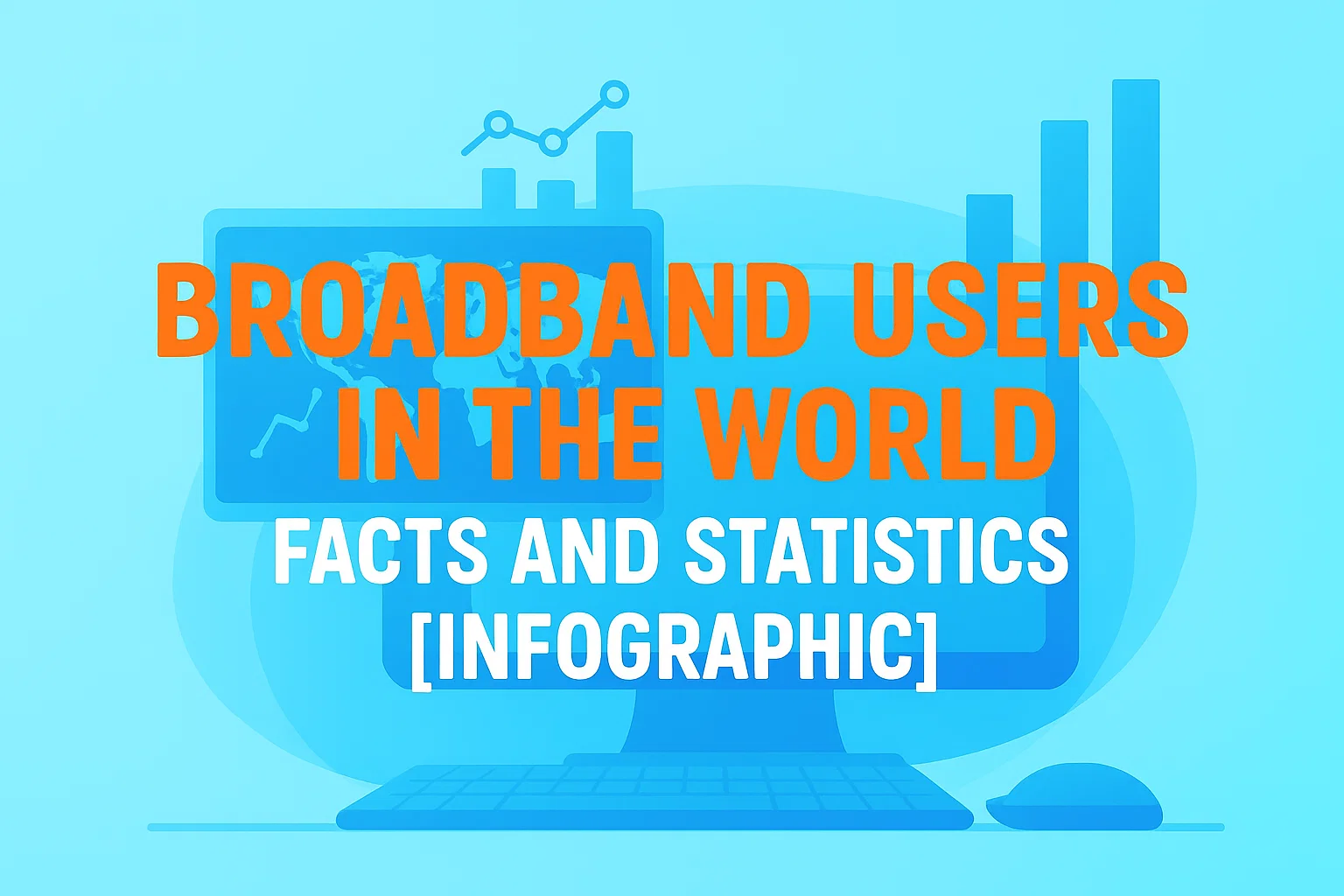Website performance optimization has become essential for businesses that target providing a smooth user experience. Whether you are a small startup or a giant enterprise, investing in high-quality website development services ensures your site is built for speed, responsiveness, and long-term success. If your website speeds up and performs more effectively, that would have huge implications for your overall success. User engagement, conversion rates, and even search engine ranking would be directly influenced by these.
Contents
- 1 What is web performance optimization?
- 2 Why does web performance optimization matter?
- 3 Web Performance Optimization Techniques
- 4 The Importance of Web Performance Optimization
- 5 How Browser Optimization Can Improve Your Website’s Speed
- 6 Mobile Web Performance Optimization: Key Considerations for 2025
- 7 The Role of AI in Load Speed and Performance Optimization
- 8 Conclusion
What is web performance optimization?
Web performance optimization relates to optimizing speed and performance improvements on websites so that their use does not disappoint. Thereby, websites could be sure enough that the speed has improved by all means possible because the main aspects include all content that takes as long a loading time for those users of its web page who open that same web page during a browser.
Having a slow-loading website is no longer considered a luxury but a necessity today because most users access the internet via mobile devices. A site that loads slowly can frustrate more users and increase the bounce rate. The visitors will most likely leave a site once the loading time exceeds three seconds, thereby increasing the chance of them missing the business opportunity.
Why does web performance optimization matter?
There are several reasons why web performance optimization is crucial for your website's success. Here are some key factors:
1. Improved User Experience
A fast website usually gives a much better user experience. When customers come to access the content hosted on a webpage, they normally stay longer because it loads more quickly. Such frustrations are easily created by slower websites, ensuring that the customer will not have a fair user experience.
2. Higher Conversion Rates
Website performance directly affects conversion rates. If the website is slow, there is a chance that one user will not stay on the website to complete an action such as making a purchase, email newsletter, or any other action. It has been found that a one-second delay in page loading time can reduce conversions by up to 7%. Web performance optimization increases the chances of visitor conversion into customers.
3. Better SEO Rankings
Google views page load speed as a ranking factor. Websites that load a lot faster get ranked above those that load slower. Core Web Vitals, part of Google's metrics to measure parts of page experience, contribute much to the SEO rankings. Going for web performance optimization increases your chances of reaching higher ranks and organic traffic on your site.
4. Reduced Bounce Rates
Bounce rate refers to the count of visitors leaving a website right after reading or browsing through only one page on that website. In the case of higher bounce rates, it means that there is inadequate engagement between users and your content; with poor page load time, this will be the cause. Optimizing your website performance will definitely cut down the rate of bounce and keep them around for more time.
5. Increased Mobile Accessibility
With the increased penetration of mobile use for accessing websites, it would be very beneficial if your site is optimized properly to work nicely on all display sizes. Ensuring that it loads fast enough and works right on mobile platforms will provide an optimum user experience when accessed from those devices.
Web Performance Optimization Techniques
Several web performance optimization techniques can improve the speed and overall performance of your website. Here are some of the most effective techniques:
1. Image Optimization
Images are usually the largest files on a webpage, and they can affect page load times significantly. You can reduce their file size by compressing images without losing quality. Photoshop, TinyPNG, and ImageOptim are tools that help optimize images for faster loading.
2. Minify CSS, JavaScript, and HTML
Minification removes unnecessary characters in the CSS, JavaScript, and HTML files. It gets rid of unnecessary white space characters like spaces, comments, and line breaks. Minifying the files results in reduced size, hence loading the pages faster. The minification tools are UglifyJS, CSSNano, and HTML Minifier, which automatically minify your code.
3. Leverage Browser Caching
Caching works by allowing your browser to remember static resource images, stylesheets, CSS, and JavaScript files on users' devices for future visits, so that when returning to your webpage, the said resources do not have to be redownloaded, causing the page loading time to dramatically increase. An appropriate expiration on resources will enable you to do fewer requests with the server, with a better rate of performance in return.
4. Enable Compression
This can compress your web files, cutting down on your website's size. With enabled Gzip compression, the amount of data transferred from your server to the browser of a user is reduced, saving loads on your own time.
5. Use Content Delivery Networks (CDNs)
A CDN is a geographically distributed set of servers spread across various locations worldwide. When a visitor gets to your website, the CDN serves that content from the nearest server. This reduces latency and makes load times much faster. This way, no matter where your users are located, you can ensure that your website loads really fast.
6. Lazy Loading
The opposite is lazy loading content, in which multimedia, such as videos and images, are only there when they enter the viewport when scrolling to this part of a page. These approaches decrease the overall initial load and save bandwidth for pages that actually contain loads of media.
7. Reduce HTTP Requests
Every time a page is loaded, multiple HTTP requests for the retrieval of diverse resources such as images, scripts, and stylesheets are usually made. There is a solution to improve this: minimizing the number of HTTP requests through file combinations and CSS templates, and reducing the number of plugins.
8. Asynchronous Loading for JavaScript
Rendering can be blocked with the help of JavaScript files, which makes page loads longer. On the other hand, if these files are downloaded in an asynchronous way, this helps the browser render the rest of the page in the meantime, which reduces page load time.
9. Optimize Web Fonts
Web fonts add extra load time to a website. Limiting the number of web fonts and using efficient font formats like WOFF2 reduces the size of font files and improves performance.
The Importance of Web Performance Optimization
Here’s the updated content with 2024, 2023, and 2022 stats included:
- By 2024, 40 percent of visitors will leave websites that take more than 3 seconds to load. This is a rise from 39 percent in 2023 and 38 percent in 2022.
- Good INP was realized for 97% of the desktop and 74% of the mobile sites in 2024, versus 95% and 70% in 2023, respectively.
- 53% of mobile visitors bounce from pages that take 3+ seconds to load in 2024 (similar to 2023, down from 55% in 2022).
- Conversion rates decline by 4.42% with each additional second of load time in 2024, an increase from 4.7% in 2023.
- Mobile traffic is expected to account for more than 70% of total internet usage in 2024, up from 68% in 2023.
- The INP is the interaction with the next paint that was accepted as a Core Web Vital by 2024, after piloting in 2023.
Relevant Data
Below is a table presenting key data that reflects the importance of web performance optimization:
| Metric | Value | Impact |
| Percentage of mobile traffic | 70%+ | The majority of users access websites via mobile. |
| Visitor abandonment rate | 40% for load times > 3 secs | Highlights the critical need for speed. |
| Bounce rate for slow sites | ~53% | Frustrated visitors leave quickly. |
| SEO ranking improvement | 1-2 ranks with faster speeds | Faster websites often rank higher. |
| Conversion rate drop | 4.42% per additional second | Direct loss of revenue due to delays. |
| Good INP achievement | 97% on desktop, 74% on mobile | Reflects improved web standards. |
For most businesses in Abu Dhabi and the UAE, an Abu Dhabi-based website design company is a necessity for taking your websites to the next level. The professionals there do not just make your website look stunning but focus on making it fast, SEO-friendly, and more. With their skills in design and development, they use the best techniques to optimize your site. They also provide support after the design is done, ensuring your website stays fast and works well.
How Browser Optimization Can Improve Your Website’s Speed
Optimizing website speed is more critical than ever. With users expecting instantaneous load times, even a delay of a few seconds can lead to increased bounce rates and decreased user satisfaction. Browser optimization plays a pivotal role in enhancing website performance.
1. Efficient Resource Loading
Browsers are responsible for fetching and rendering resources like HTML, CSS, JavaScript, and images. Optimizing how these resources are loaded can significantly improve page load times.
- Lazy Loading: Implementing lazy loading ensures that images and videos are only loaded when they enter the viewport, reducing initial load time.
- Preloading and Prefetching: Using
<link rel="preload">and<link rel="prefetch">allows browsers to fetch resources that are likely to be needed soon, improving perceived performance. - Asynchronous and Deferred Scripts: Loading JavaScript files asynchronously or deferring their execution until after the page has loaded prevents render-blocking, leading to faster page rendering.
2. Optimizing Rendering Path
The rendering path is the sequence of steps the browser takes to convert HTML into a visual representation. Optimizing this path can lead to quicker page displays.
- Critical CSS: Inlining critical CSS ensures that essential styles are applied immediately, reducing render time.
- Font Loading Strategies: Using
font-display: swapensures text is visible while web fonts are loading, preventing invisible text during page load.
3. Leveraging Browser Caching
Caching allows browsers to store resources locally, reducing the need to fetch them on subsequent visits.
- Cache-Control Headers: Setting appropriate cache headers ensures that resources are cached for optimal durations.
- Service Workers: Implementing service workers enables advanced caching strategies, allowing for offline capabilities and faster load times.
4. Reducing JavaScript Execution Time
Excessive JavaScript execution can delay page rendering.
- Code Splitting: Dividing JavaScript into smaller chunks ensures that only the necessary code is loaded initially.
- Tree Shaking: Eliminating unused code reduces the amount of JavaScript the browser needs to execute.
5. Optimizing Images and Media
Large images and media files can significantly slow down page load times.
- Responsive Images: Using the
srcsetattribute allows browsers to select the appropriate image size based on the device's screen size and resolution. - Image Compression: Compressing images reduces their file size without compromising quality.
- Modern Formats: Utilizing modern image formats like WebP can lead to smaller file sizes and faster load times.
Mobile Web Performance Optimization: Key Considerations for 2025
With mobile devices accounting for over 60% of global internet traffic, optimizing mobile web performance is paramount. In 2025, users expect seamless experiences across all devices, making mobile optimization a critical component of web development.
1. Mobile-First Design
Designing with a mobile-first approach ensures that websites are optimized for smaller screens and touch interactions.
- Responsive Layouts: Using flexible grid layouts and media queries ensures that websites adapt to various screen sizes.
- Touch-Friendly Elements: Designing buttons and links that are easy to tap enhances user experience on touch devices.
2. Performance Optimization
Mobile devices often have limited resources compared to desktops. Optimizing performance ensures smooth experiences.
- Image Optimization: Compressing images and using appropriate formats reduces load times.
- Minimizing HTTP Requests: Reducing the number of requests made by the browser decreases load times.
- Efficient JavaScript: Minifying and deferring JavaScript ensures faster execution.
3. Mobile-First Indexing
Google predominantly uses the mobile version of the content for indexing and ranking. Ensuring that the mobile version contains all essential content and metadata is crucial.
- Consistent Content: Ensuring that the mobile version has the same content as the desktop version prevents ranking issues.
- Structured Data: Implementing structured data on the mobile version aids in better indexing.
4. Touch and Gesture Optimization
Mobile users interact with websites using touch gestures. Optimizing for these interactions enhances user experience.
- Swipe Actions: Implementing swipe gestures for navigation can make interactions more intuitive.
- Pinch to Zoom: Ensuring that content is legible without zooming improves accessibility.
5. Mobile SEO Best Practices
Optimizing for mobile SEO ensures better visibility in search engine results.
- Fast Loading Times: Ensuring that pages load quickly on mobile devices reduces bounce rates.
- Local SEO: Optimizing for local search queries can drive more traffic from mobile users.
The Role of AI in Load Speed and Performance Optimization
Artificial Intelligence (AI) is revolutionizing various aspects of web development, including performance optimization. In 2025, AI-driven tools and techniques will be leveraged to enhance website load speeds and overall performance.
1. Predictive Loading
AI can analyze user behaviour to predict which resources will be needed next, preloading them to reduce wait times.
- User Behaviour Analysis: AI algorithms analyze user interactions to anticipate future actions.
- Resource Preloading: Based on predictions, AI preloads resources, ensuring they are available when needed.
2. Automated Content Delivery Optimization
AI can optimize the delivery of content based on network conditions and device capabilities.
- Adaptive Bitrate Streaming: AI adjusts the quality of media content based on the user's network speed.
- Dynamic Image Resizing: AI delivers images in appropriate sizes and formats, reducing load times.
3. Real-Time Performance Monitoring
AI continuously monitors website performance, identifying and addressing issues in real-time.
- Anomaly Detection: AI detects unusual patterns in performance metrics, signalling potential issues.
- Automated Adjustments: Upon detecting issues, AI can make real-time adjustments to optimize performance.
4. Code Optimization
AI can analyze and optimize code to improve performance.
- Code Refactoring: AI identifies inefficient code structures and suggests improvements.
- Eliminating Redundancies: AI detects and removes redundant code, reducing execution time.
5. Personalized User Experiences
AI can tailor content and resources to individual users, enhancing perceived performance.
- Content Personalization: AI delivers content based on user preferences and behaviour.
- Resource Prioritization: AI prioritizes resources that are most relevant to the user, improving load times.
Suggested FAQs:
1. What are the best website performance optimization techniques?
The best website performance optimization techniques focus on speed, efficiency, and user experience. Key methods include compressing images, leveraging browser caching, minifying CSS and JavaScript files, and using a Content Delivery Network (CDN) to distribute content globally. Lazy loading for images and videos helps reduce initial load times. Server-side optimizations, such as enabling GZIP compression and upgrading to HTTP/2, also enhance performance. Additionally, reducing redirects, optimizing databases, and implementing efficient code structures minimize resource usage. Regular performance testing with tools like Google Lighthouse ensures ongoing improvements and keeps your website fast, responsive, and user-friendly across all devices.
2. How can I improve web performance without affecting design?
Improving web performance without compromising design involves optimizing behind-the-scenes elements while preserving visual appeal. Start by compressing images using modern formats like WebP, which maintains quality at smaller sizes. Use asynchronous loading for non-critical scripts to prevent render delays. Implement caching strategies and a Content Delivery Network (CDN) to speed up content delivery globally. Minify and combine CSS and JavaScript files to reduce HTTP requests while maintaining consistent styling. Lazy load offscreen media so visuals appear intact without slowing the page. With careful front-end optimization and efficient code structure, your website can remain visually rich yet perform seamlessly across devices.
3. What role does browser optimization play in improving website speed?
Browser optimization plays a vital role in enhancing website speed by ensuring web assets load efficiently on the client side. Techniques like caching enable browsers to store static resources locally, reducing repeated server requests. Enabling compression (GZIP or Brotli) decreases file transfer sizes. Proper use of HTTP headers helps browsers manage caching and content delivery effectively. Minified and well-structured code ensures faster parsing and rendering. Modern browsers also support preloading and prefetching resources, which shortens perceived loading times. By aligning website performance practices with browser capabilities, developers can significantly improve responsiveness, load speed, and overall user experience.
4. Why is mobile web performance optimization crucial for modern websites?
Mobile web performance optimization is essential because most users now access the internet via mobile devices. A slow or unresponsive mobile site leads to higher bounce rates and lost conversions. Optimizing for mobile involves using responsive design, lightweight code, and compressed assets to ensure fast loading even on limited networks. Implementing Accelerated Mobile Pages (AMP) or Progressive Web Apps (PWA) can further boost speed and engagement. Google’s mobile-first indexing also means performance directly impacts SEO rankings. By prioritizing mobile optimization, businesses enhance accessibility, improve user satisfaction, and ensure their websites perform reliably across all screen sizes and network conditions.
5. What are the top web optimization techniques for better SEO rankings?
Top web optimization techniques for better SEO rankings combine performance and search visibility strategies. Fast page load times improve user experience and directly influence Google’s ranking algorithms. Compress images, minify files, and leverage browser caching to speed up delivery. Use a CDN to enhance global accessibility. Optimize Core Web Vitals — focusing on metrics like Largest Contentful Paint (LCP), Cumulative Layout Shift (CLS), and First Input Delay (FID). Implement mobile-first design and ensure HTTPS security for trustworthiness. Structured data and clean code enhance crawlability. Regularly audit performance using SEO and speed tools to maintain consistent visibility and competitive rankings.
Conclusion
Web performance optimization is crucial for user satisfaction, better SEO, and website success. This technique helps use web performance optimization techniques that ensure a fast and smooth online experience. A website design company in Abu Dhabi will make sure that the site is attractive as well as high-performing for better engagement, rankings, and conversion.

















